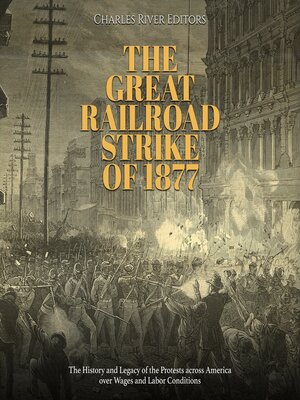The Great Railroad Strike of 1877
audiobook (Unabridged) ∣ The History and Legacy of the Protests across America over Wages and Labor Conditions
By Charles River Editors

Sign up to save your library
With an OverDrive account, you can save your favorite libraries for at-a-glance information about availability. Find out more about OverDrive accounts.
Find this title in Libby, the library reading app by OverDrive.



Search for a digital library with this title
Title found at these libraries:
| Loading... |
When trains were introduced as a popular means of transportation, some of the first tracks laid terminated in New York, and the expansion of railroads led to the birth of train stations across the country. In general, these were small buildings where passenger could buy tickets and wait for their trains to arrive, and according an article written by Samuel Dunn around the turn of the 20th century, "The first Manhattan terminal was opened in 1832 at Centre Street, near the present City Hall, by the New York and Harlem road, now leased to the New York Central. Trains were run by steam as far south as Fourteenth Street and pulled from there by horses." If it is hard to conceive of large box cars or even heavier locomotives being pulled by horse, it's important to remember that the first train cars were little more than traditional carriages designed to move on iron tracks.
Initially, the nation's railway system was a fragmented, often chaotic system, but Cornelius Vanderbilt went about creating an interregional system, integrating a network of smaller railroads that ran according to their own policies, procedures, and even timetables. It was not only more customer-friendly, but it helped lower shipping costs and created a more efficient system of transporting goods and people. This led to the creation of one of the nation's first corporations, the New York Central and Hudson Railroad.
While companies competed with each other, the employees themselves were often squeezed, not only working long hours in hazardous conditions, but making pitiful pay. Put simply, in an age before widespread labor regulations were enacted and unions organized, the employers exercised nearly absolute power over employees.






